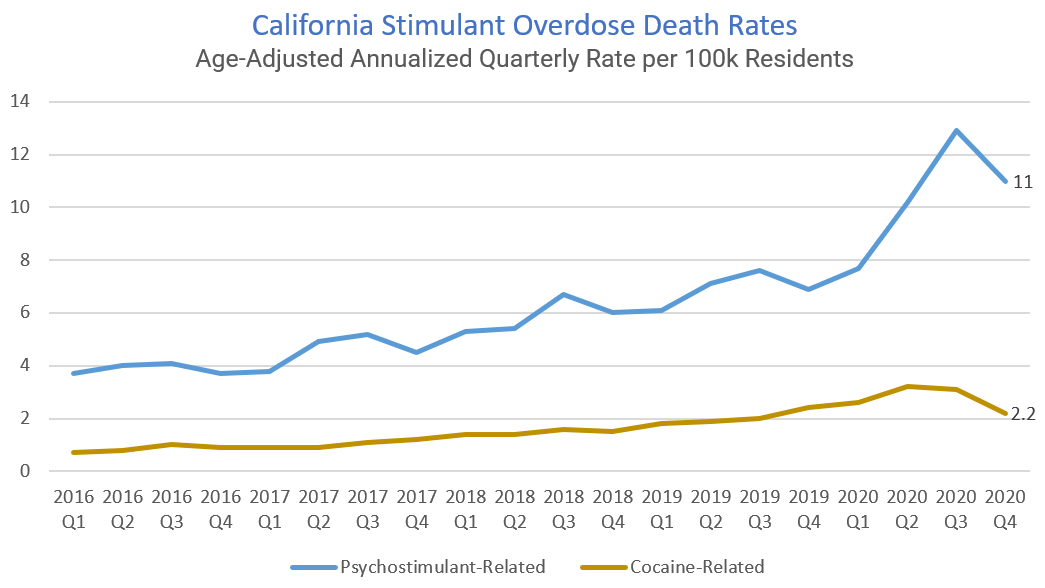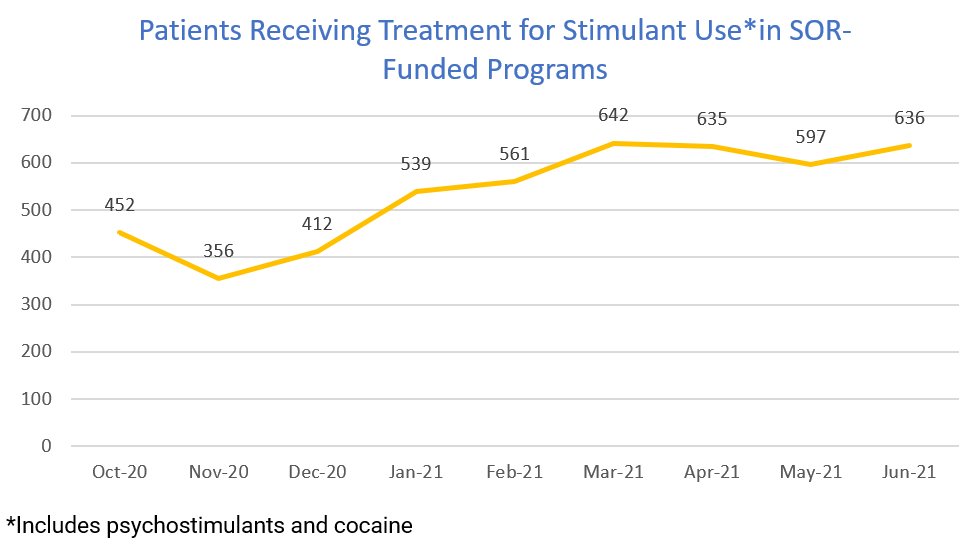STIMULANT USE AND TREATMENT TRENDS
Authors: Diane Hilderbrand and Kendall Darfler
Stimulants include psychostimulants like methamphetamine and methylphenidates (for example, Adderall®, Dexedrine®, and Ritalin®), as well as cocaine. Overdose deaths due to stimulants, and particularly stimulants in combination with fentanyl and other opioids, have been increasing rapidly.

As of 2020, the California psychostimulant-related overdose death rate was 11.0 and the cocaine-related overdose death rate was 2.2 deaths per 100,000 residents. These rates represent 51.1% and 37.6% increases, respectively, over the prior year. The increase in overdose death rates mirror national trends, which have highlighted the need to address the use of multiple substances – not just opioids – as part of the overdose crisis.
In response to this growing need, in 2020, the Substance Abuse and Mental Health Services Administration (SAMHSA) added flexibility to State Opioid Response (SOR) funding to allow states to address stimulant use. The California Department of Health Care Services (DHCS) has added treatment and prevention of stimulant use disorders as a focus to many of its SOR-funded projects.

As of June 2021, over 4,000 patients started treatment for stimulant use in SOR-funded programs and organizations. Treatments included contingency management (i.e., motivational incentives), other behavioral interventions (for example, cognitive behavioral therapy), and exercise-based interventions. The growth in the number of patients receiving treatment over time is promising.